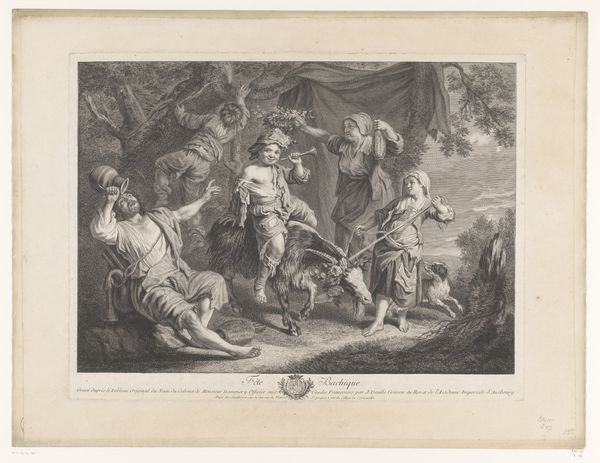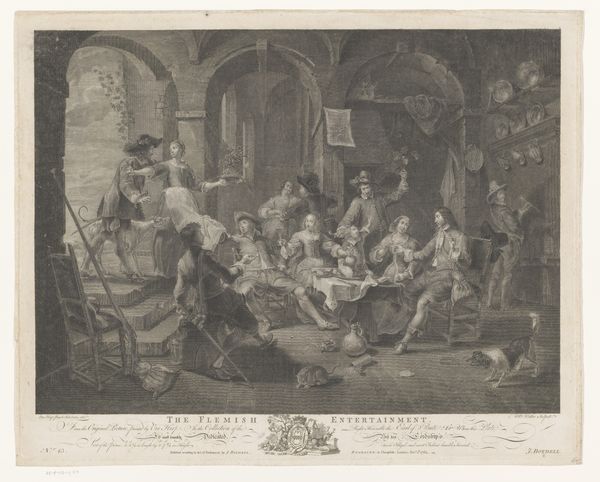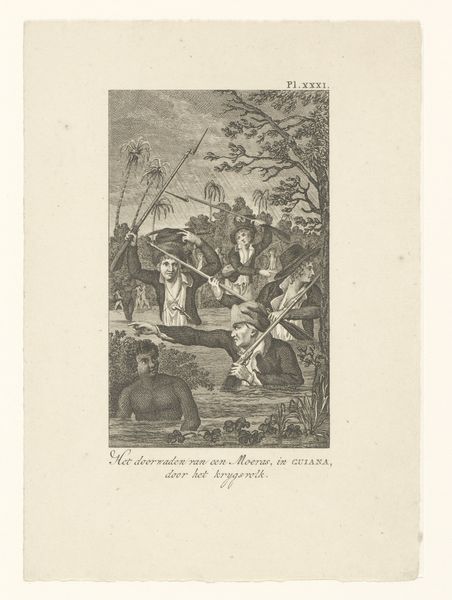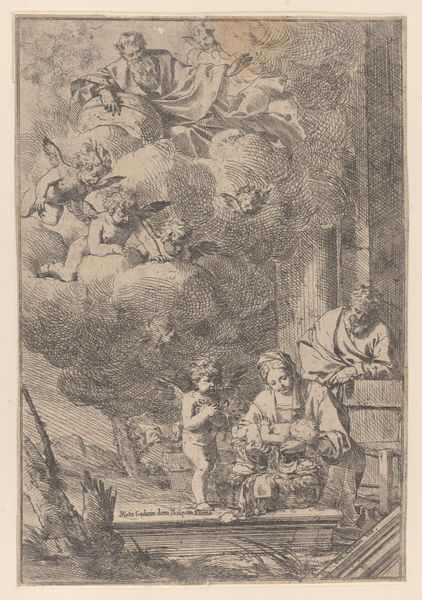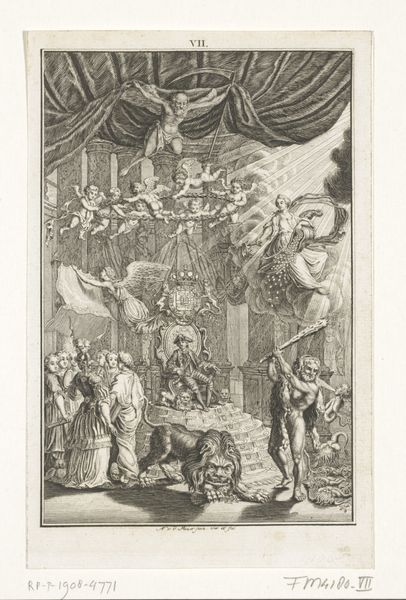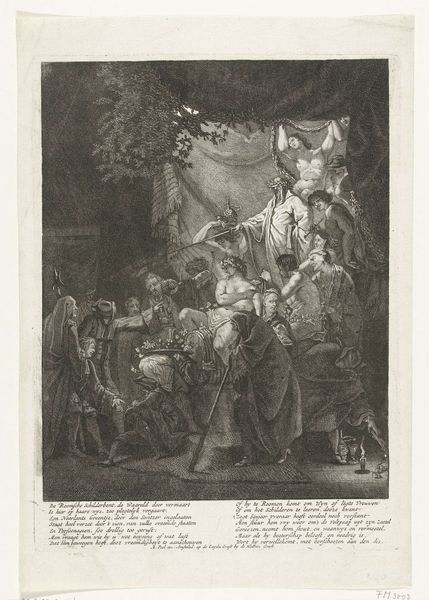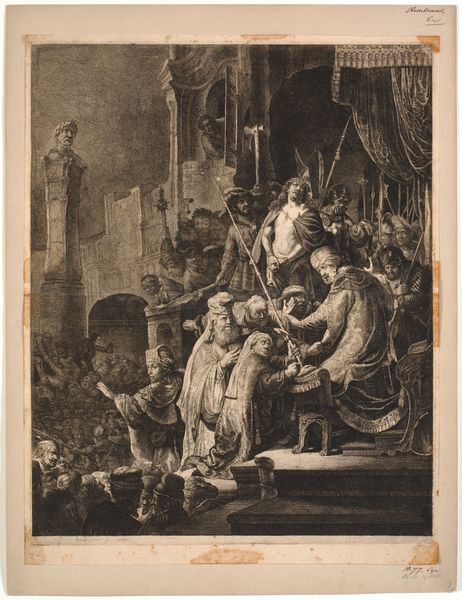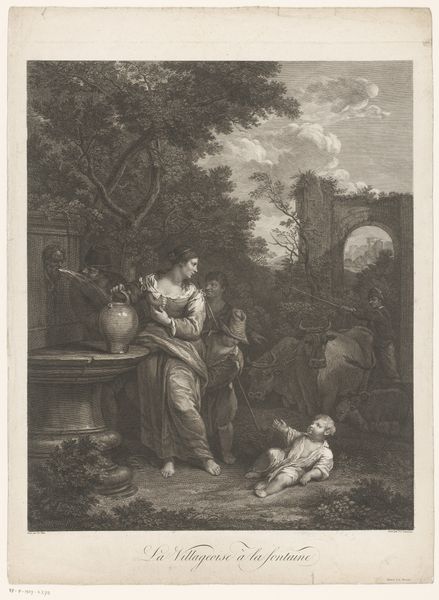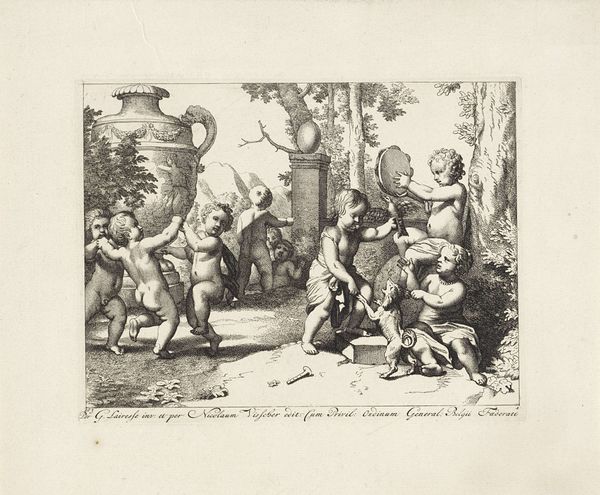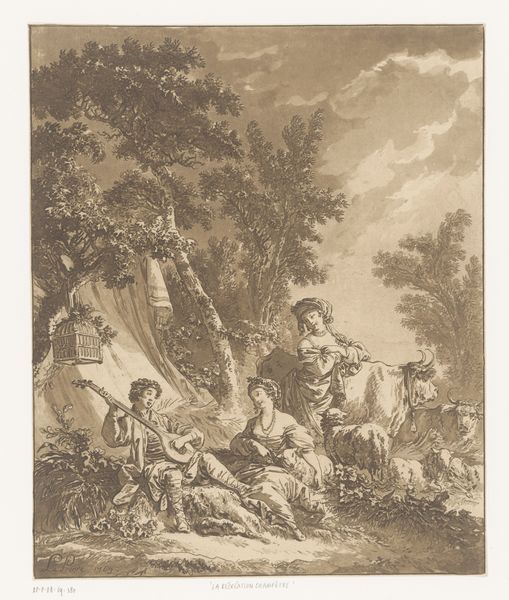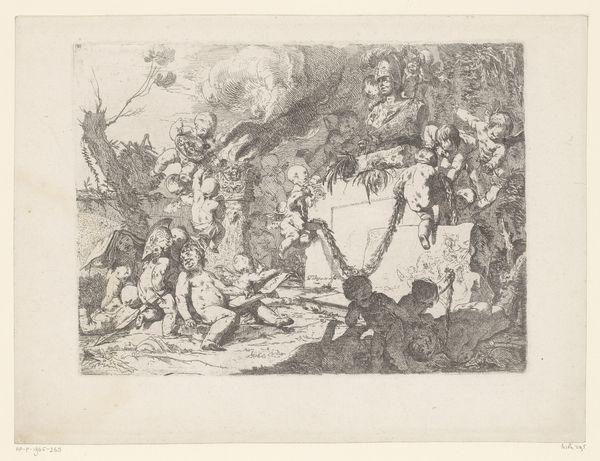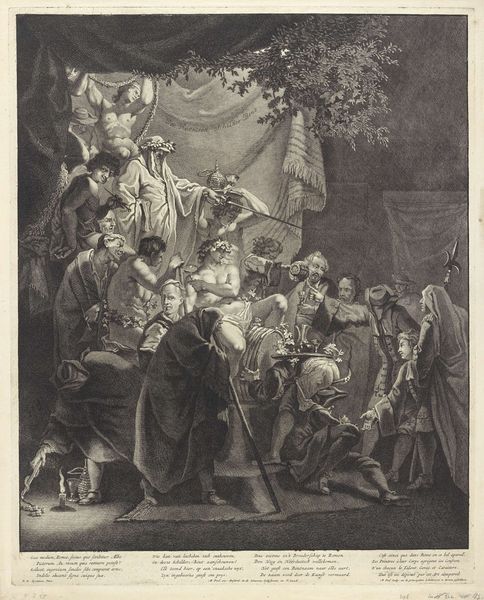
#
portrait
#
photo of handprinted image
#
light pencil work
#
wedding photograph
#
photo restoration
#
light coloured
#
old engraving style
#
retro 'vintage design
#
archive photography
#
old-timey
#
19th century
Dimensions: height 674 mm, width 483 mm
Copyright: Rijks Museum: Open Domain
Editor: Here we have "Kwakzalver op een plein met toehoorders," or "Quack on a square with listeners," a print made in 1794 by Carl Ernst Christoph Hess. There’s something so theatrical about it, the way everyone’s arranged almost like a stage. I'm wondering, what visual cues do you see here that speak to the deeper meanings of the image? Curator: Ah, a fascinating scene indeed! Note the central figure under the umbrella – that's our "kwakzalver," or quack. The umbrella itself is a curious symbol, isn't it? It signifies protection, but also artifice, a shielding from truth. The tower in the background, stable and solid, contrasts with the charlatan’s temporary stage. What feelings are conjured for you by the stark, barren tree to the left? Editor: It looks really gnarled and a little sinister! I see how the figures around the quack are so detailed. Some seem to listen intently, but others seem more skeptical. Curator: Precisely! That duality is crucial. Consider how Hess has positioned them. There are those drawn in, perhaps desperate for hope. And there are those lurking on the periphery, skeptical observers like those peeking out from the window frame behind the speaker. Every gesture tells a story, reflecting the psychological tensions at play, the cultural anxieties surrounding medicine and trust at the time. Editor: So it's not just about showing us a scene, but really capturing a whole set of cultural beliefs and anxieties in one image. It’s quite sobering actually. Curator: Indeed. By using this interplay of symbols, the artist transmits a cultural memory of doubt. Now, given what you see here, how might the print speak to concerns still resonant today?
Comments
No comments
Be the first to comment and join the conversation on the ultimate creative platform.
